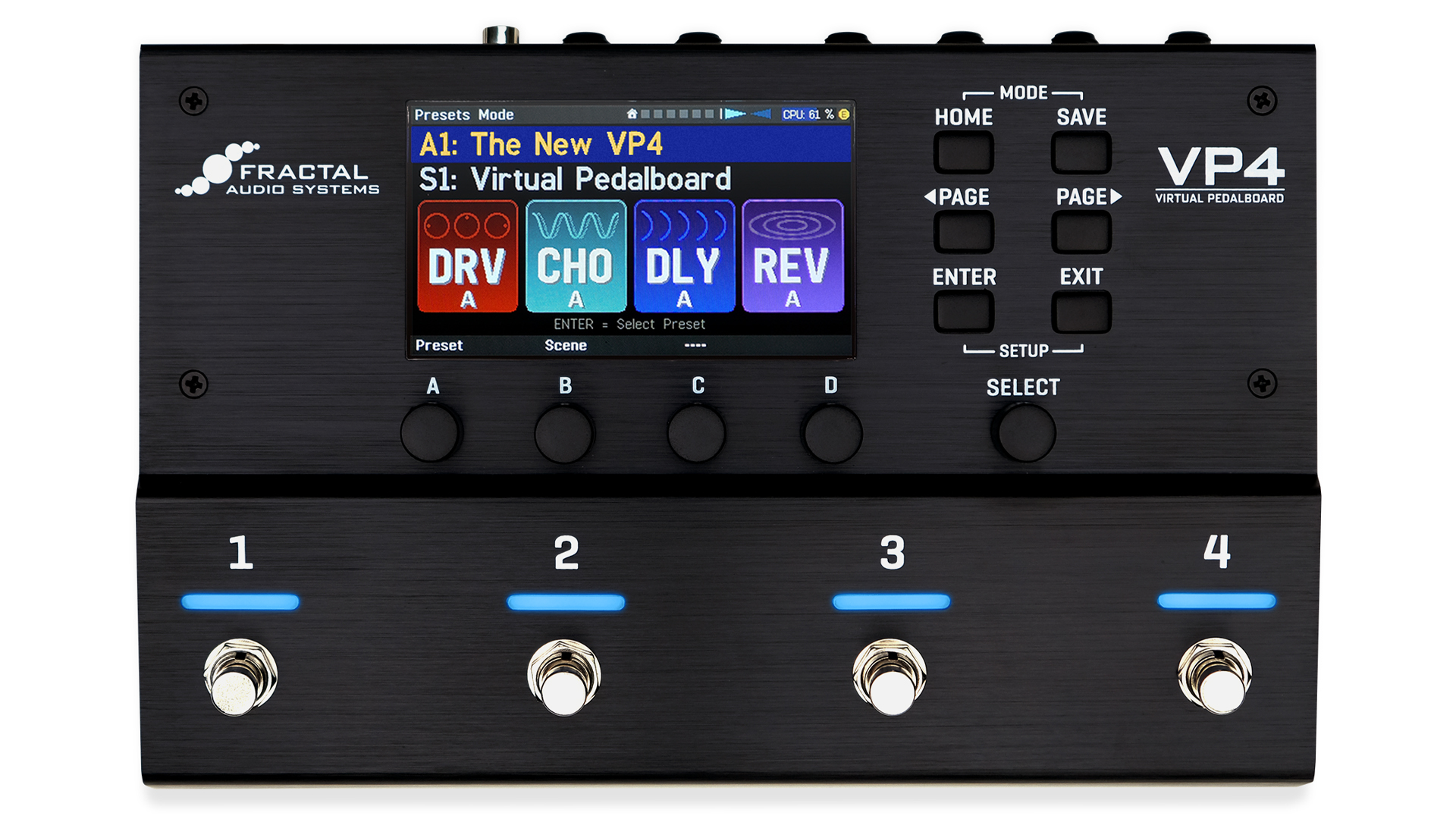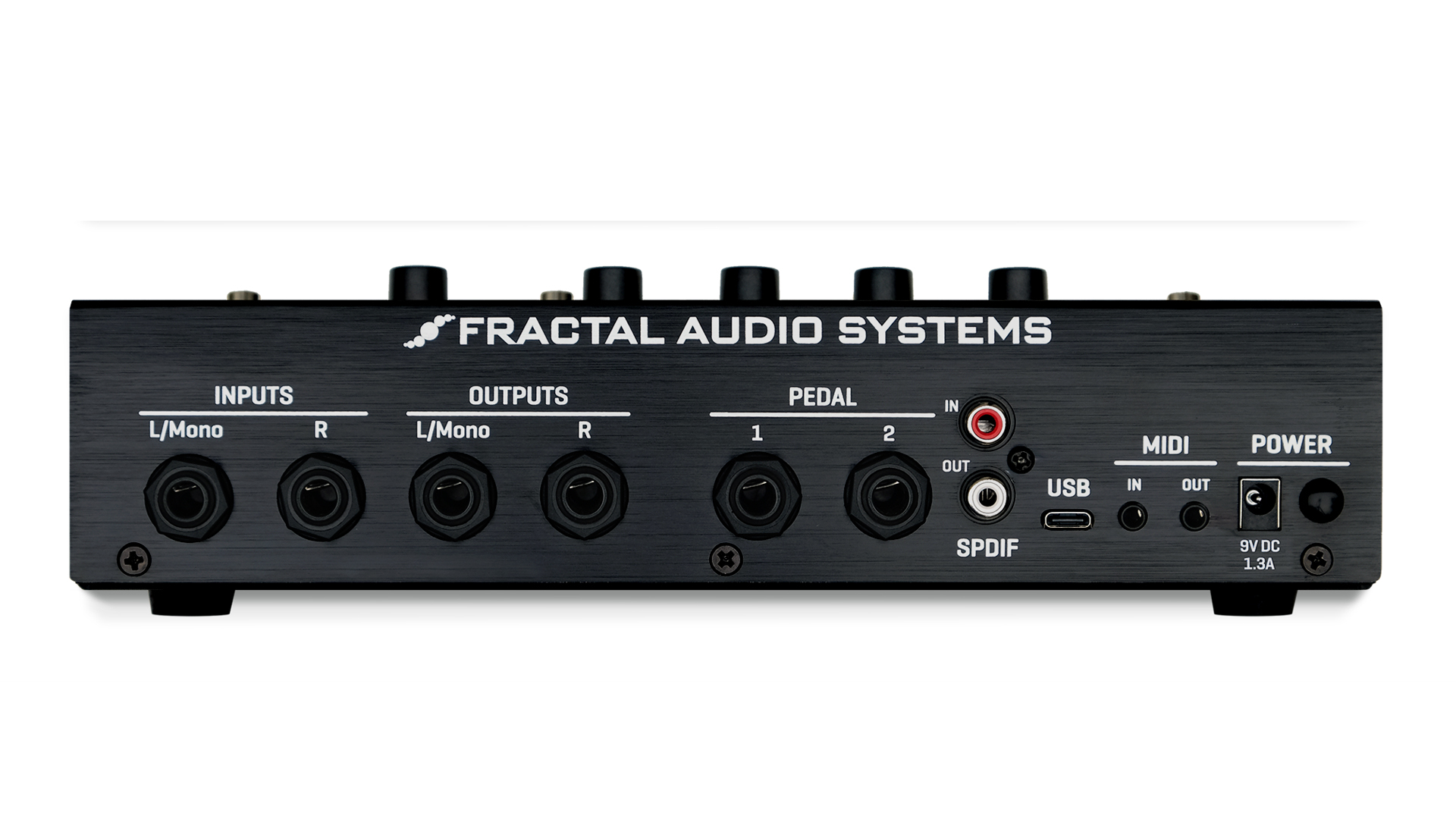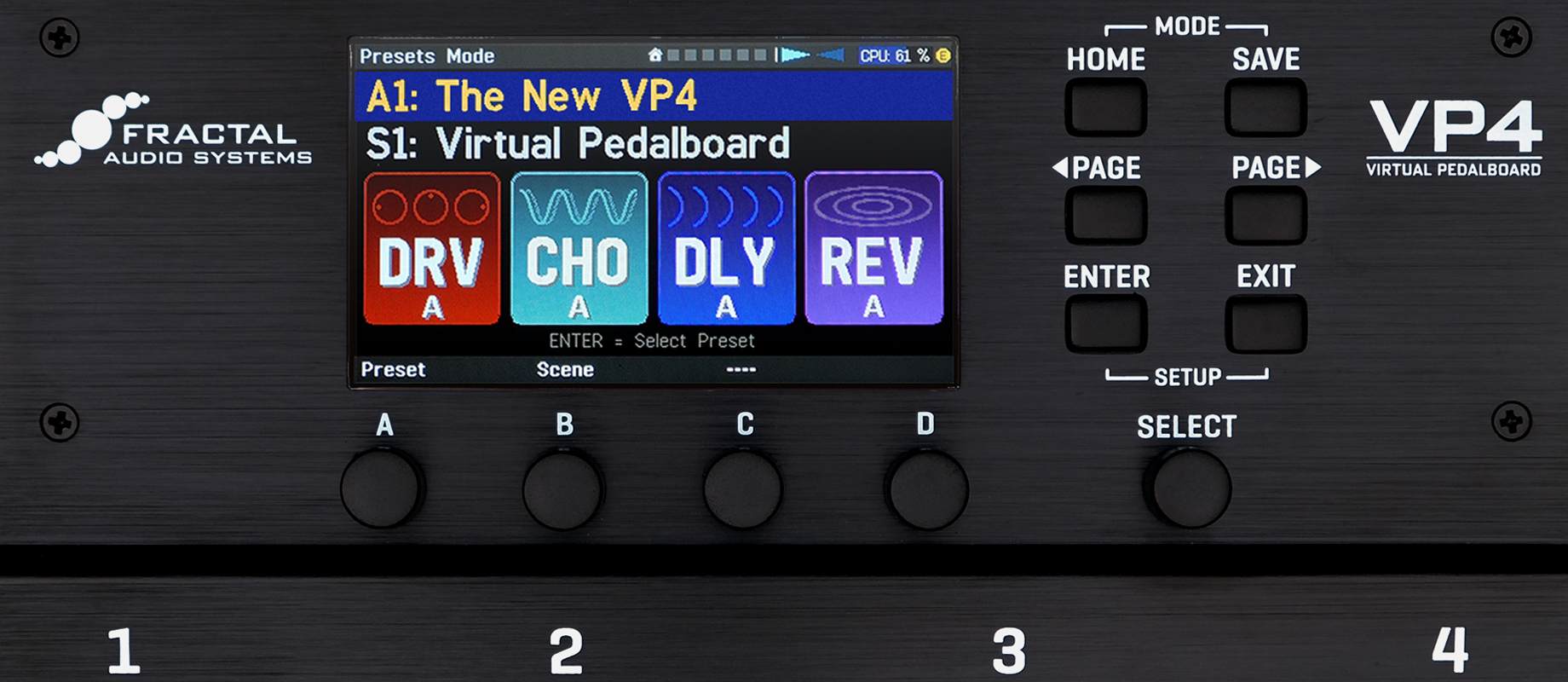GuitarPlayer Verdict
A stunningly deep, great-sounding and highly functional pedalboard with a rather impressive price considering all that it can do..
Pros
- +
Clever design
- +
Highly functional
- +
Sounds great
- +
Reasonably priced
Cons
- -
Some minor connectivity compromises required for four-cable-method
You can trust Guitar Player.
Public anticipation for any new Fractal product inevitably follows routine: a buzz, followed by rumor, inuendo and, eventually, celebration. And now that the new VP4 Virtual Pedalboard has hit the streets, I’m confident there will be plenty of the latter. You'll always have a few detractors in this market, of course, because you can’t make all of the people happy all of the time, unless you build a unit eight feet wide to fit all the features and charge $10,000… at which point you’re back to making no one happy anyway.
But without lobbing too much of a spoiler into the party, the VP4 is very good at doing exactly what it sets out to do. And it does so housed in a form factor that has been cleverly designed to make that “what it does” as accessible as possible to the widest range of players likely to use it. Put simply, it’s hard to argue with that.
While Fractal calls the VP4 a “virtual pedalboard” — by virtue of the software that powers the unit — it is most definitely a solid piece of hardware, housed in a 10-by-6.25-by-2.5–inch steel enclosure with four foot switches, five rotary selectors, six pushbuttons and a 4-by-2-inch full-color display screen. Arguably, it's more akin to the multi-effects units available since the late ’70s or so, although it’s exponentially more powerful and mindbogglingly more flexible.
The VP4 brain is loaded with 25 effects categories, with dozens of sub-types for each available (for example, 63 drive pedals, 66 reverbs, 32 flangers, 44 plex delays). All of these can be configured into 104 presets (in 26 banks arranged alphabetically), and each preset contains four scenes, each of which itself contains four channels (possible variations of the same effect block loaded into it). So thanks to Fractal’s flexible switching possibilities you’re never really limited to just four individual effects under your feet at one time, unless you want to be.
Those familiar with the Fractal ecosystem will understand the layers and groupings available within the pedal’s setup parameters and the myriad ways in which you can access multiple presets (or parts thereof) on the fly. In this regard, it functions much like an FM3 or FM9 amp-modeling floor unit, minus the amp and cab blocks. As such, a full understanding of the setup possibilities includes coming to grips with familiar Fractal grouping terms such as “blocks,” “scenes,” “channels,” and the more universally familiar “presets” and the like. It behooves new users to read the very clear and comprehensive Owner’s Manual. But even without going too deep, the guitarist who just wants to use the VP4 as a four-effect floor unit with an on/off foot switch for each virtual pedal will get a lot of value out of it. Start probing the unit’s full capabilities, though, and the possibilities really are endless.
The real heart of the VP4’s programming and performance falls within the user’s choice of mode in which to use it. You can use Effects mode to set up blocks for a drive, phaser, delay and reverb, for example, and simply turn each on or off as desired via the foot switch. Going deeper, this mode also allows for a hold-press of any footswitch to reveal the four channels available within each effect block. Each channel — let’s say this block is an overdrive, for example — can hold different settings for that overdrive, or even an entirely different type of overdrive, meaning presets can be set up without limitation. Furthermore, pressing two foot switches at a time can access other functions, such as the tuner.
Even more powerful, Scene mode offers one-stomp access to varying states derived from your four-pedal setup — Drive off but Delay and Reverb on in Scene 1, Drive on in Scene 2, and so on, however you set it up to function for your song or set list. I won’t try to replicate the manual here, which would be pointless (and impossible), but suffice it to say the options are many.

Programming can be done on the unit using the push button selectors for Home, Enter, Save, Page Left, Page Right and Exit, along with the rotary Selector knob and four rotary controls, whose parameter assignments vary depending on the screen you’ve entered. I’ve seen players who are adept at this stuff make and save significant preset changes on their FM9 amp modelers in seconds. I find it easier to use Fractal's free VP4-Edit software for this. It presents a more comprehensive view of the unit’s myriad parameters right on your Mac or Windows monitor. But unlike many compact digital units, you don’t need the app to access the VP4's full array of effects options: they’re all right there in the unit.
The VP4’s connections include mono/stereo inputs and outputs, a pair of pedal jacks for connecting expression pedals or extra foot switches, SPDIF In and Out (for fully digital connection to other devices), USB-C, 3.5mm MIDI In and Out, and the power input jack for the supplied external unit. In addition to enabling connection to your computer and the VP4-Edit app, the USB connection allows use of the unit as a 2x2 24bit/48kHz audio interface for recording, or MIDI-over-USB applications.

Even with the impressive list of capabilities, there has to be a compromise somewhere. The most noteworthy, to my mind, might be that the VP4’s size and the demands of other features don’t allow for the inclusion of an effects loop as such, which would better enable four-cable-method (4CM) usage to place drive pedals (and the like) in a front-of-amp position and delay, modulation and reverb after, or in an amp’s effects loop, and still have your wet effects in stereo.
As it is, the VP4’s 4CM setup option does allow for splitting off virtual pedals in pre and post positions but in a mono configuration only, since the dual inputs and outputs are all needed for the to-and-from connections. Otherwise, it can be used with a Drive block included first-position in a stereo setup into a pair of pedal-platform amps that receive the lot, or loaded with all delay, modulation and reverb effects and positioned fully in the stereo loop of another modeler or pair of amps. That said, there’s so much going on here that this isn’t much to complain about, and again, you have to draw the line somewhere.
So, for all this unbridled functionality, how does it sound? In two words: utterly fantastic. The company might have made its name on amp models first and foremost, but Fractal’s many and varied effects are highly acclaimed and have acquitted themselves extremely well in the rigs of myriad big-stage professional players to date. In fact, the VP4 includes the majority of what’s available on the powerhouse Axe-FX III (other than the amps, cabs, and some amp- or routing-specific functions), and many of these compete with the best in the digital realm.
As an old analog soul, I was particularly surprised by the dynamics and realism of many of the excellent overdrive-pedal models. The medium-gain Shimmer Drive, Griddle Cake and Timothy emulations — representing the Voodoo Lab Sparkle Drive, Crowther Hot Cake and MXR Timmy, respectively — rocked my world, whether into a traditional tube amp or a pair of FRFRs via a compact amp-modeling pedal. I was not so surprised, though, by the lush, multidimensional Cloud, Large Hall or SFX reverb variations, given Fractal’s reputation in this department, but it’s impossible not to be transported sonically by a deep-dive Plex Delay preset, for example, which can have you lost in your noodling for hours.
All in all, this small-shop New Hampshire digital audio designer has done it again with a stunningly deep, great-sounding and highly functional product that comes in at a rather impressive price considering all that it can do. Worthy of an Editor’s Pick Award? Do you even have to ask?
SPECIFICATIONS
CONTACT fractalaudio.com
PRICE $699 street
CONTROLS Four multi-function rotary parameter knobs, Selector knob, six editing/navigation push buttons, four foot switches.
I/O L/Mono and R Inputs, L/Mono and R outputs, Pedal 1 and 2 jacks, SPDIF In and Out, USB-C, 3.5mm MIDI In and Out, power in
POWER 9V DC at 1.3A, power supply included
BUILT China and USA
KUDOS A cleverly designed, highly functional, and great sounding multi-FX modeler at a reasonable price
CONCERNS Some minor compromises required in connectivity for 4CM
Dave Hunter is a writer and consulting editor for Guitar Player magazine. His prolific output as author includes Fender 75 Years, The Guitar Amp Handbook, The British Amp Invasion, Ultimate Star Guitars, Guitar Effects Pedals, The Guitar Pickup Handbook, The Fender Telecaster and several other titles. Hunter is a former editor of The Guitar Magazine (UK), and a contributor to Vintage Guitar, Premier Guitar, The Connoisseur and other publications. A contributing essayist to the United States Library of Congress National Recording Preservation Board’s Permanent Archive, he lives in Kittery, ME, with his wife and their two children and fronts the bands A Different Engine and The Stereo Field.
“It’s a special kind of moment when you hit that first note of a solo and you literally get nothing.” He’s played with David Bowie and the Cure, but Reeves Gabrels says things don’t always go right, even for the pros
“We’re Liverpool boys, and they say Liverpool is the capital of Ireland.” Paul McCartney explains how the Beatles introduced harmonized guitar leads to rock and roll with one remarkable song
“We’d heard Jimi Hendrix, we'd heard the Who, but now we finally got to see these guys. And watching Jimi Hendrix burn his guitar….” Grace Slick on Hendrix at Monterey, Jefferson Airplane and the Spanish origins of “White Rabbit”














